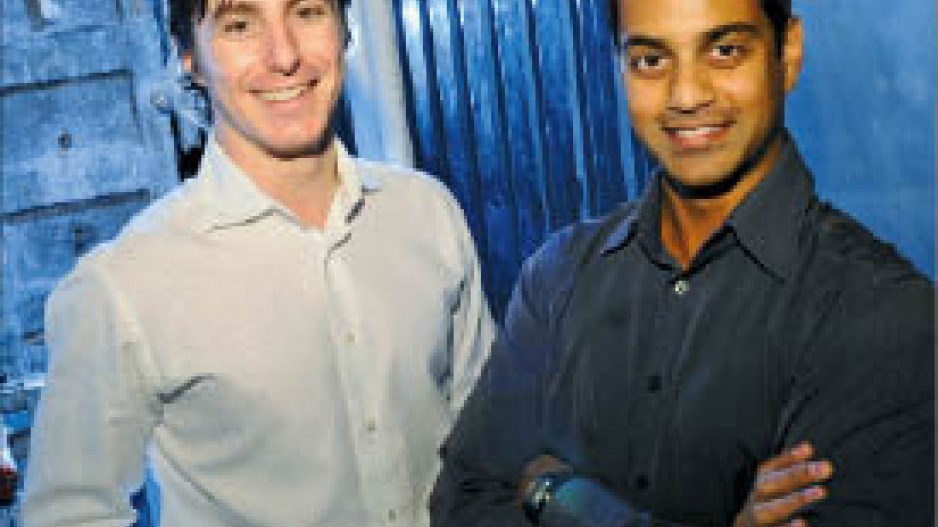Ninety-seven per cent of the earth?s water is salty, and of the 3% that?s fresh, nearly 70% is locked in glaciers and polar ice caps.
What little fresh water is available on Earth isn?t always so fresh – much of it is polluted with industrial or human waste.
Three B.C. companies are working on different approaches to cleaning up the world?s water.
Saltworks Technologies Inc. has developed a radically new approach to desalination that it says can clean up industrial effluent and provide clean drinking water from saltwater.
Kelowna-based Element Four Technologies Inc. has developed an atmospheric water generator that it claims literally wrings drinking water from the air, and Ostara Nutrient Recovery Technologies Inc. is helping clean up municipal wastewater, while producing a valuable resource: fertilizer.
Co-founded in 2008 by Ben Sparrow and Joshua Zoshi, Saltworks uses the chemistry of saltwater to create voltage, which is then used to remove salt ions from seawater or industrial effluent. Counterintuitive though it might sound, the key to Saltworks? technology is making saltwater even saltier.
The process takes advantage of nature?s tendency to seek equilibrium, said Sparrow, Saltworks? CEO. Salty effluent or seawater is evaporated to concentrate it. The hyper-salty water is then separated by a membrane from regular saltwater.
Nature?s push for equilibrium causes the ions from the hyper-salty water to flow to the less dense saltwater. That movement of ions creates voltage, which is used to pull the salt from a third stream of saltwater.
?You?re basically using salt?s power to remove salt,? Sparrow said.
Because the amount of energy needed to desalinate water in other processes has always been an obstacle, Saltworks? approach removes a major impediment to desalination.
Sparrow believes his company?s technology could address water shortage issues in arid regions like the Arabian Peninsula. But the company is currently focused primarily on treating industrial effluent.
?Where our technologies have proven of great interest is to industry, particularly the oilsands,? Sparrow said.
One of the drawbacks to treating wastewater is the high input costs. Ostara has found a solution to the problem by developing a chemical process that removes phosphorus and ammonia from municipal sewage and turns it into a fertilizer called Crystal Green.
Ostara?s pearl nutrient recovery process doesn?t replace traditional sewage treatment; it merely adds a step and produces a product that can generate revenue.
It costs municipalities $3 million to $5 million to include the Ostara recovery process in their waste water treatment systems. Ostara buys back the fertilizer produced and sells it. The system pays for itself within about five years, said Ostara president and CEO Phillip Abrary.
?They get a very quick payback in their investment.?
There are three Ostara systems in operation. A fourth is scheduled to be up and running soon in Portland, Oregon.
Construction is also set to start on treatment plants that include the Ostara process in Saskatoon and London, England.
As for the world?s fresh water, less than 1% is in the air in the form of clouds and humidity. But that?s enough to provide clean drinking water in countries with the right humidity and temperature – namely, Mexico, South and Central America, India and coastal Africa.
That?s where Element Four plans to sell its Watermill. The Kelowna company has been testing the device for nearly two years and plans to go into production next year.
The Watermill uses condensation to extract moisture from the air. It works only when temperatures are 27 degrees Celsius or higher and humidity is 60% or more. Under those conditions, it can provide up to 13 litres of drinking water per day.
As the water is condensed, it?s purified with UV radiation, filtered and radiated again. Each unit sells for about US$1,495.
One of the ironies in wet tropical climates is that there?s a lack of safe drinking water, and many consumers end up buying bottled water, said Neil Belenkie, vice-president of global sales for Element Four. ?




